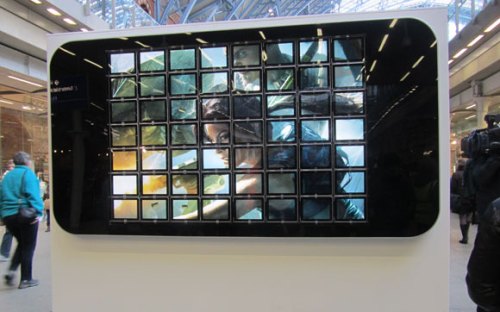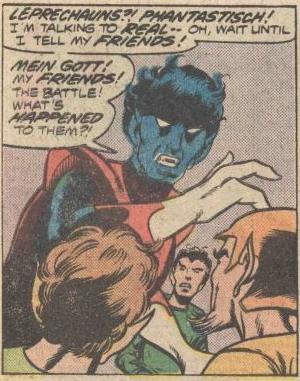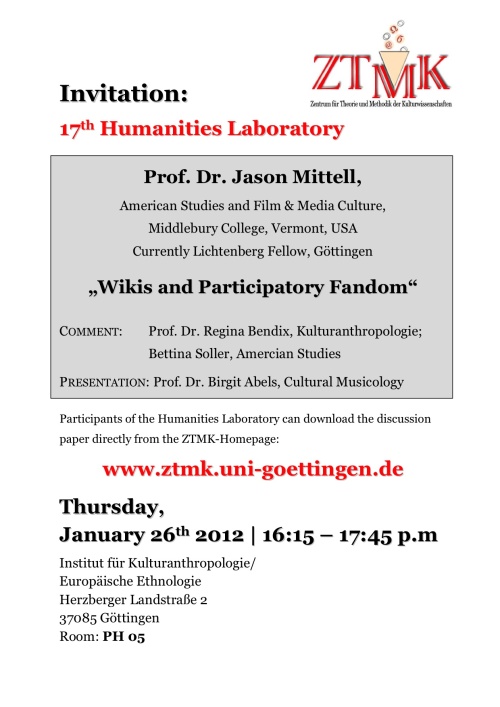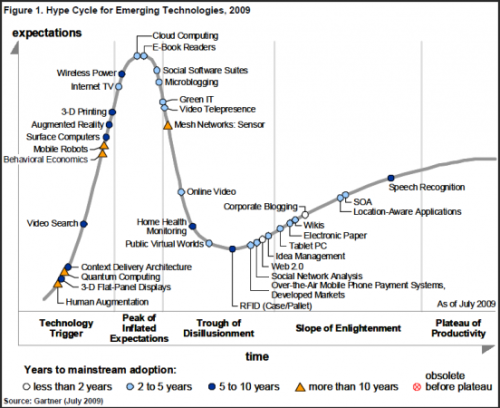[youtube http://www.youtube.com/watch?v=R8XAlSp838Y]
In his classic work on “the play element of culture,” Homo Ludens (1938), Johan Huizinga writes:
“Play is older than culture, for culture, however inadequately defined, always presupposes human society, and animals have not waited for man to teach them their playing.”
In the meantime, posthumanists of various stripes, actor-network theorists (or ANTs), speculative realists, and scholars in the fields of critical animal studies, ecocriticism, and media studies, among others, have challenged the notion that culture “always presupposes human society.” In these paradigms, we are asked to see octopuses as tool-users with distinct cultures of material praxis, objects as agents in their own right, and “man’s best friend,” the dog, as a “companion species” in a strong sense: as an active participant in the evolutionary negotiation of human agency. The reality of play in the nonhuman world, which Huizinga affirms, would accordingly be far less surprising for twenty-first century humans than it might have been for Huizings’s early twentieth-century readers.
[youtube http://www.youtube.com/watch?v=fLclGPr7fj4]
Still, the situation is not completely obvious. Consider Tillman the Skateboarding Dog (see the videos above) or his various “imitators” on Youtube. Can we say, with Huizinga, that Tillman “[has] not waited for man to teach [him his] playing”? Certainly some human taught him to ride his skateboard (and waveboard and surfboard etc.). Furthermore, the imbrication with human culture goes further as Tillman’s riding becomes a spectacle for human onlookers, users of Youtube, and viewers of Apple’s iPhone ads (in which he appeared in 2007):
[youtube http://www.youtube.com/watch?v=qObhmS8zX8M]
And yet it’s not the genesis or the appropriation but the independent reality of Tillman’s play that’s really at stake, i.e. not whether he learned the material techniques of his play from humans or whether humans profit from that play in various ways, but whether Tillman himself is really playing, whether he is an agent of play, when he appears to us to be playing. Is there any reason to deny this? After watching several more clips of Tillman in action, I am inclined to think not. We might raise any number of ethical, political, or other concerns about the treatment of animals like Tillman (who do, after all, have to undergo some sort of training before they can play like this — and training of this sort is work, hardly just fun and games). But, regardless of these questions, these video clips would seem to serve an epistemological (evidentiary) function, as they attest to the factual occurrence of a state of play (and associated affects?) in the nonhuman world. They militate, that is, against the view that pet owners unidirectionally play with their pets (by throwing sticks for dogs to fetch, for example), instead granting to animals an independent play agency and distributing the play between human and nonhuman agencies.
Anyone who has lived with an animal might find all of this quite unsurprising, and yet Tillman’s feats would seem to have a philosophical, metaphysical relevance, as illustrations of a nonhuman agency in a robust sense — or as phenomena that are poorly accounted for (in the terminology of speculative realism) by “correlationist” philosophies that deny the possibility of any but a human perspective on the world.
In the realm of media, a non-correlationist view of play as distributed amongst human and nonhuman agents, enmeshed in ensembles of organic and machinic embodiments, has emerged in game studies, where Ian Bogost and Nick Montfort’s platform studies, Alexander Galloway’s algorithmic aesthetics, as well as various applications of posthumanist inflections of phenomenology and actor-network theory, to name a few, all unsettle the primacy and coherence of the human in the play of agencies that is the video game.
What has been missing up to this point, though, is a consideration of nonhuman animals in relation to games’ technical agencies. This is understandable, of course, as most game controllers are designed for primates with prehensile thumbs, and many house pets seem not to understand the basic conventions of — an admittedly anthropocentric — screen culture (I’m thinking of Vivian Sobchack’s cat in The Address of the Eye).
Leave it to Tillman the Skateboarding Dog, then, to point the way to a new field of inquiry — a thoroughly posthumanist field of game design for gaming animals, or a critical animal game studies (which might be critical of the role of animals in games culture as well as recognizing animals themselves as critical gamers):
[youtube http://www.youtube.com/watch?v=FdgO3cEYYTw]
All jokes aside, though, Tillman’s virtual skateboarding raises some interesting questions for game studies by reframing familiar topics of immersion and identification. Surely, we will not want to impute to Tillman an Oedipal conflict, lack, or any of the other structures of the psychoanalytic apparatus that (as a carryover from film studies) is sometimes invoked to explain human involvement in onscreen events, and yet some form of embodied identification is clearly taking place here. What lessons should we draw with regard to our own gameplay practices?







